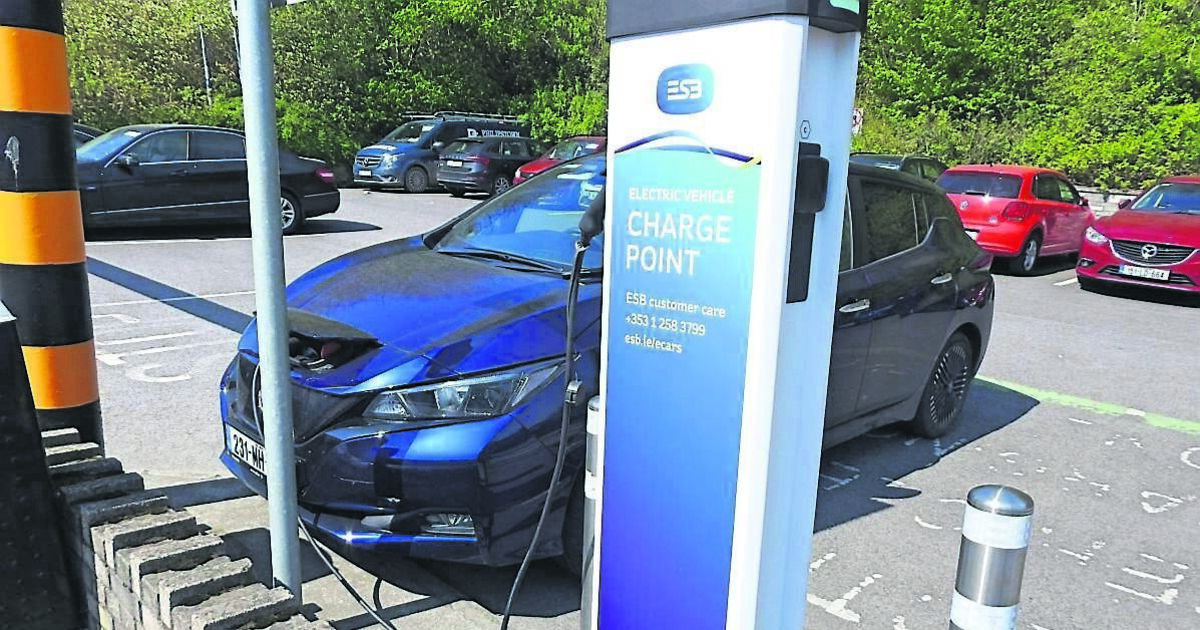Electric vehicles are still the future of cars

Electric vehicle sales have stalled in 2024 and the sharp increases in sales from the past several years have dissipated.
First, I’ll give you seven big reasons why this has happened.
The end of the pandemic
As humans, we experienced an existential crisis with covid, then a ground war erupted in Europe. Both disrupted Europe’s energy demand and supply chains.
As has happened time and again in our lifetimes and well before, a crisis in the energy supply chain forces us to reevaluate how we live. The surge of interest in electric cars coincided with covid and the war, and EVs gained major traction within our society.
However, as also happens time and again, the supply shocks have passed, the urgency to change goes away and our interest declines.
The cost of living and housing
Ireland and many other countries have experienced a significant surge in the cost of living. In Ireland, it is in part driven by rapid growth in the economy and population, with huge related pressures on the cost of living and housing. The early buyers of EVs were the early adopters, the environmentalists and incentivised businesses. While EV prices have dropped, they haven’t dropped enough for the middle-classes.
Public charging challenges
Every EV owner has their own story about long-distance driving and the public charging infrastructure. This obviously doesn’t create a happy customer and positive messaging.
In general, Tesla drivers tend to be happy with its public charging infrastructure while all drivers tend to have seen their fair share of malfunctioning chargers.
Foolish government targets
The 2021 Climate Action Plan from the government targeted a million EVs by 2030. This was wishful thinking from day-dreaming ministers and highly-paid management consultants.
It was and is not possible, given the required investment in public infrastructure, EV prices, electricity costs and supply, and the dreaded ‘range anxiety’. That said, there’s a reasonable likelihood we’ll get to over 300,000 EVs on the road by 2030.
The rise of data centres
Over 20% of the electricity in Ireland is now consumed by data centres, and this is increasing. Some will argue these are a necessary part of the tech economy. Others see electricity-and-water gobbling Frankensteins.
The high demand raises the overall price of electricity for all consumers, not just EV drivers, and reduces the potential fuel savings of driving an EV vs. petrol or diesel.
Struggling manufacturers and global tariffs
Volkswagen was in the news last summer in Germany as it has plans to close manufacturing plants and lay off workers.
The shift to electrification is causing turmoil for many of the traditional manufacturers and has global implications.
The USA has announced tariffs of 100% on Chinese EV imports. The EU is following suit with lower but significant tariffs. China has tariffs on foreign EVs. Thus, we are in a global trade war over EVs.
Hybrids are electric, too!
Hybrid-electric vehicle sales are up everywhere as car buyers see them as being the easier step to green mobility. In general, hybrids tend to emit less and be more efficient than the conventional petrol or diesel car.
All the above factors are muddying the waters for new EV purchasers.
Now let us turn to three reasons why EV sales will recover.
An EV may suit your lifestyle very well
You can now get some very good deals on new and used EVs compared to equivalent conventional cars. The prices really have fallen over the years for the latest and greatest technologies.
Your daily drives will comfortably be handled by an EV, even in the most inclement of Irish weather. But, take care to plan ahead if you are going long distance.
High speeds and poor weather more rapidly discharge the battery. So slow down.
Driving on the motorway at 100 km/h instead of 120 km/h may get you about 100 km more in range.
Cheaper, longer-range vehicles with higher quality
Many of the manufacturers are working hard to drive down manufacturing costs and get to a low-cost family car.
We have seen the initial vehicles from the Chinese and this market will really open up when Tesla enters it in 2025 or 2026.
As we get close to the end of the decade, we will be seeing the EV better priced to be a car for the masses.
More home solar PV
As the expanding economy and data centres have soaked up our electricity, we have turned to our neighbours across the sea, and Britain now supplies about 15% of our electricity.
The only way that you can guarantee the green powering of any vehicle is to use the solar energy hitting your roof. The costs of PV installations have dropped and owners marvel at the monies paid back for electricity supplied to the grid.
It’s like having your own petrol dripping from the roof!
The author of this article, Dr John Hayes teaches at UCC and is a veteran of the EV industry. John presented ‘What Engineers should know about Electric Vehicle Batteries’ at the Rochestown Park Hotel last month, an Engineers Ireland event

